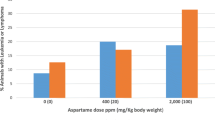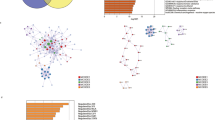Abstract
The cytochrome P450 (P450 or CYP) is involved in both detoxification and metabolic activation of many carcinogens. In order to identify the role of hepatic P450 in the mutagenesis of genotoxic carcinogens, we generated a novel hepatic P450 reductase null (HRN) gpt delta mouse model, which lacks functional hepatic P450 on a gpt delta mouse background. In this study, 4-(methylnitrosamino)-1-(3-pyridyl)-1-butanone (NNK) was used to treat HRN gpt delta mice and control littermates. Gene mutations in the liver and lungs were detected, and mutation spectra were analyzed. Pharmacokinetic analyses were performed, and tissue levels of NNK and metabolite were determined. NNK-induced mutant frequencies (MFs) were equivalent to spontaneous MFs in the liver, but increased more than 3 times in the lungs of HRN gpt delta mice compared to control mice. NNK-induced mutation spectra showed no difference between HRN gpt delta mice and control littermates. Toxicokinetic studies revealed reduced clearance of NNK with elevated tissue concentrations in HRN gpt delta mice. To our knowledge, these are the first data demonstrating that NNK cannot induce mutagenesis in the liver without P450 metabolic activation, but can induce mutagenesis in lungs by a hepatic P450-independent mechanism. Moreover, our data show that hepatic P450 plays a major role in the systemic clearance of NNK, thereby protecting the lungs against NNK-induced mutagenesis. Our model will be useful in establishing the role of hepatic versus extrahepatic P450-mediated mutagenesis, and the relative contributions of P450 compared to other biotransformation enzymes in the genotoxic carcinogens’ activation.




Similar content being viewed by others
References
Arlt VM, Stiborova M, Henderson CJ et al (2005) Environmental pollutant and potent mutagen 3-nitrobenzanthrone forms DNA adducts after reduction by NAD(P)H:quinone oxidoreductase and conjugation by acetyltransferases and sulfotransferases in human hepatic cytosols. Cancer Res 65(7):2644–2652. doi:10.1158/0008-5472.CAN-04-3544
Arlt VM, Stiborova M, Henderson CJ et al (2008) Metabolic activation of benzo[a]pyrene in vitro by hepatic cytochrome P450 contrasts with detoxification in vivo: experiments with hepatic cytochrome P450 reductase null mice. Carcinogenesis 29(3):656–665. doi:10.1093/carcin/bgn002
Arlt VM, Singh R, Stiborova M et al (2011) Effect of hepatic cytochrome P450 (P450) oxidoreductase deficiency on 2-amino-1-methyl-6-phenylimidazo[4,5-b]pyridine-DNA adduct formation in P450 reductase conditional null mice. Drug Metab Dispos 39(12):2169–2173. doi:10.1124/dmd.111.041343
Baird WM, Hooven LA, Mahadevan B (2005) Carcinogenic polycyclic aromatic hydrocarbon-DNA adducts and mechanism of action. Environ Mol Mutagen 45(2–3):106–114. doi:10.1002/em.20095
Boverhof DR, Chamberlain MP, Elcombe CR et al (2011) Transgenic animal models in toxicology: historical perspectives and future outlook. Toxicol Sci 121(2):207–233. doi:10.1093/toxsci/kfr075
Brown PJ, Massey TE (2009) In vivo treatment with 4-(methylnitrosamino)-1-(3-pyridyl)-1-butanone (NNK) induces organ-specific alterations in in vitro repair of DNA pyridyloxobutylation. Mutat Res 663(1–2):15–21. doi:10.1016/j.mrfmmm.2008.12.008
Cariello NF (1994) Software for the analysis of mutations at the human hprt gene. Mutat Res 312:173–185
Cleaver JE (1969) Xeroderma pigmentosum: a human disease in which an initial stage of DNA repair is defective. Proc Natl Acad Sci U S A 63(2):428–435
Coon MJ (2005) Cytochrome P450: nature’s most versatile biological catalyst. Annu Rev Pharmacol Toxicol 45:1–25. doi:10.1146/annurev.pharmtox.45.120403.100030
Dalton TP, Dieter MZ, Matlib RS et al (2000) Targeted knockout of Cyp1a1 gene does not alter hepatic constitutive expression of other genes in the mouse [Ah] battery. Biochem Biophys Res Commun 267(1):184–189. doi:10.1006/bbrc.1999.1913
Evans WE, Relling MV (1999) Pharmacogenomics: translating functional genomics into rational therapeutics. Science 286(5439):487–491
Grover PL, Sims P (1968) Enzyme-catalysed reactions of polycyclic hydrocarbons with deoxyribonucleic acid and protein in vitro. Biochem J 110(1):159–160
Gu J, Weng Y, Zhang QY et al (2003) Liver-specific deletion of the NADPH-cytochrome P450 reductase gene: impact on plasma cholesterol homeostasis and the function and regulation of microsomal cytochrome P450 and heme oxygenase. J Biol Chem 278(28):25895–25901. doi:10.1074/jbc.M303125200
Gu J, Cui H, Behr M et al (2005) In vivo mechanisms of tissue-selective drug toxicity: effects of liver-specific knockout of the NADPH-cytochrome P450 reductase gene on acetaminophen toxicity in kidney, lung, and nasal mucosa. Mol Pharmacol 67(3):623–630. doi:10.1124/mol.104.007898
Gu J, Chen CS, Wei Y et al (2007) A mouse model with liver-specific deletion and global suppression of the NADPH-cytochrome P450 reductase gene: characterization and utility for in vivo studies of cyclophosphamide disposition. J Pharmacol Exp Ther 321(1):9–17. doi:10.1124/jpet.106.118240
Hang B (2010) Formation and repair of tobacco carcinogen-derived bulky DNA adducts. J Nucleic Acids 2010:709521. doi:10.4061/2010/709521
Hecht SS (1998) Biochemistry, biology, and carcinogenicity of tobacco-specific N-nitrosamines. Chem Res Toxicol 11(6):559–603. doi:10.1021/tx980005y
Hecht SS, Trushin N, Rigotty J et al (1996) Complete inhibition of 4-(methylnitrosamino)-1-(3-pyridyl)-1-butanone-induced rat lung tumorigenesis and favorable modification of biomarkers by phenethyl isothiocyanate. Cancer Epidemiol Biomarkers Prev 5(8):645–652
Heddle JA, Dean S, Nohmi T et al (2000) In vivo transgenic mutation assays. Environ Mol Mutagen 35(3):253–259. doi:10.1002/(SICI)1098-2280(2000)35:3<253:AID-EM11>3.0.CO;2-J
Henderson CJ, Otto DM, Carrie D et al (2003) Inactivation of the hepatic cytochrome P450 system by conditional deletion of hepatic cytochrome P450 reductase. J Biol Chem 278(15):13480–13486. doi:10.1074/jbc.M212087200
Horiguchi M, Masumura K, Ikehata H et al (1999) UVB-induced gpt mutations in the skin of gpt delta transgenic mice. Environ Mol Mutagen 34(2–3):72–79. doi:10.1002/(SICI)1098-2280(1999)34:2/3<72:AID-EM3>3.0.CO;2-8
Ikeda M, Masumura K, Sakamoto Y et al (2007) Combined genotoxic effects of radiation and a tobacco-specific nitrosamine in the lung of gpt delta transgenic mice. Mutat Res 626(1–2):15–25. doi:10.1016/j.mrgentox.2006.07.003
Jalas JR, Hecht SS, Murphy SE (2005) Cytochrome P450 enzymes as catalysts of metabolism of 4-(methylnitrosamino)-1-(3-pyridyl)-1-butanone, a tobacco specific carcinogen. Chem Res Toxicol 18(2):95–110. doi:10.1021/tx049847p
Kaufmann WK (1989) Pathways of human cell post-replication repair. Carcinogenesis 10(1):1–11
Lao Y, Villalta PW, Sturla SJ, Wang M, Hecht SS (2006) Quantitation of pyridyloxobutyl DNA adducts of tobacco-specific nitrosamines in rat tissue DNA by high-performance liquid chromatography-electrospray ionization-tandem mass spectrometry. Chem Res Toxicol 19(5):674–682. doi:10.1021/tx050351x
Levova K, Moserova M, Kotrbova V et al (2011) Role of cytochromes P450 1A1/2 in detoxication and activation of carcinogenic aristolochic acid I: studies with the hepatic NADPH:cytochrome P450 reductase null (HRN) mouse model. Toxicol Sci 121(1):43–56. doi:10.1093/toxsci/kfr050
Masumura K, Matsui M, Katoh M et al (1999) Spectra of gpt mutations in ethylnitrosourea-treated and untreated transgenic mice. Environ Mol Mutagen 34(1):1–8
Masumura K, Horiguchi M, Nishikawa A et al (2003) Low dose genotoxicity of 2-amino-3,8-dimethylimidazo[4,5-f]quinoxaline (MeIQx) in gpt delta transgenic mice. Mutat Res 541(1–2):91–102
Minnick DT, Gerson SL, Dumenco LL, Veigl ML, Sedwick WD (1993) Specificity of bischloroethylnitrosourea-induced mutation in a Chinese hamster ovary cell line transformed to express human O6-alkylguanine-DNA alkyltransferase. Cancer Res 53(5):997–1003
Nebert DW, Dalton TP (2006) The role of cytochrome P450 enzymes in endogenous signalling pathways and environmental carcinogenesis. Nat Rev Cancer 6(12):947–960. doi:10.1038/nrc2015
Nohmi T (2000) [Development of novel genotoxicity assays by genetic engineering methods]. Kokuritsu Iyakuhin Shokuhin Eisei Kenkyusho Hokoku(118):1–20
Nohmi T, Masumura K (2004) Gpt delta transgenic mouse: a novel approach for molecular dissection of deletion mutations in vivo. Adv Biophys 38:97–121
Nohmi T, Masumura K (2005) Molecular nature of intrachromosomal deletions and base substitutions induced by environmental mutagens. Environ Mol Mutagen 45(2–3):150–161. doi:10.1002/em.20110
Nohmi T, Katoh M, Suzuki H et al (1996) A new transgenic mouse mutagenesis test system using Spi- and 6-thioguanine selections. Environ Mol Mutagen 28(4):465–470. doi:10.1002/(SICI)1098-2280(1996)28:4<465:AID-EM24>3.0.CO;2-C
Pineau T, Costet P, Puel O et al (1998) Knockout animals in toxicology: assessment of toxin bioactivation pathways using mice deficient in xenobiotic metabolizing enzymes. Toxicol Lett 102–103:459–464
Shane BS, Smith-Dunn DL, deBoer JG, Glickman BW, Cunningham ML (2000) Subchronic administration of phenobarbital alters the mutation spectrum of lacI in the livers of Big Blue transgenic mice. Mutat Res 448(1):69–80
Singh VK, Ganesh L, Cunningham ML, Shane BS (2001) Comparison of the mutant frequencies and mutation spectra of three non-genotoxic carcinogens, oxazepam, phenobarbital, and Wyeth 14,643, at the lambdacII locus in Big Blue transgenic mice. Biochem Pharmacol 62(6):685–692
Smith TJ, Guo ZY, Thomas PE et al (1990) Metabolism of 4-(methylnitrosamino)-1-(3-pyridyl)-1-butanone in mouse lung microsomes and its inhibition by isothiocyanates. Cancer Res 50(21):6817–6822
Sturla SJ, Scott J, Lao Y, Hecht SS, Villalta PW (2005) Mass spectrometric analysis of relative levels of pyridyloxobutylation adducts formed in the reaction of DNA with a chemically activated form of the tobacco-specific carcinogen 4-(methylnitrosamino)-1-(3-pyridyl)-1-butanone. Chem Res Toxicol 18(6):1048–1055. doi:10.1021/tx050028u
Su T, Bao Z, Zhang QY, Smith TJ, Hong JY, Ding X (2000) Human cytochrome P450 CYP2A13: predominant expression in the respiratory tract and its high efficiency metabolic activation of a tobacco-specific carcinogen, 4-(methylnitrosamino)-1-(3-pyridyl)-1-butanone. Cancer Res 60(18):5074–5079
Takeuchi H, Saoo K, Yokohira M et al (2003) Pretreatment with 8-methoxypsoralen, a potent human CYP2A6 inhibitor, strongly inhibits lung tumorigenesis induced by 4-(methylnitrosamino)-1-(3-pyridyl)-1-butanone in female A/J mice. Cancer Res 63(22):7581–7583
Thybaud V, Dean S, Nohmi T et al (2003) In vivo transgenic mutation assays. Mutat Res 540(2):141–151
Uno S, Dalton TP, Derkenne S et al (2004) Oral exposure to benzo[a]pyrene in the mouse: detoxication by inducible cytochrome P450 is more important than metabolic activation. Mol Pharmacol 65(5):1225–1237. doi:10.1124/mol.65.5.1225
Weng Y, Fang C, Turesky RJ, Behr M, Kaminsky LS, Ding X (2007) Determination of the role of target tissue metabolism in lung carcinogenesis using conditional cytochrome P450 reductase-null mice. Cancer Res 67(16):7825–7832. doi:10.1158/0008-5472.CAN-07-1006
Wu L, Gu J, Weng Y et al (2003) Conditional knockout of the mouse NADPH-cytochrome p450 reductase gene. Genesis 36(4):177–181. doi:10.1002/gene.10214
Xiao Y, Ge M, Xue X et al (2008) Hepatic cytochrome P450 s metabolize aristolochic acid and reduce its kidney toxicity. Kidney Int 73(11):1231–1239
Acknowledgments
This work was supported by the National Natural Scientific Foundation of China [21077112] and Key Projects of National Science and the Technology Pillar Program [2008ZX09305-007, 2009ZX09501-033]. We thank Dr. Tao Chen (NCTR, USA) for helpful discussions, comments, and criticisms.
Conflict of interest
The authors declare that they have no conflict of interest.
Author information
Authors and Affiliations
Corresponding authors
Additional information
Yang Luan and Guozhen Xing contributed equally to this work.
Electronic supplementary material
Below is the link to the electronic supplementary material.
204_2012_891_MOESM1_ESM.tif
Supplementary Fig. 1 Histological examination of livers from 2-month-old female HRN gpt delta transgenic mice and control littermates. A. Liver of a control littermates; centrilobular hepatocytes have fragmented, glycogen-rich cytoplasm. B. Liver of HRN gpt delta transgenic mice; midzonal hepatocytes have large and small clear vacuoles typical of micro- and macrovesicular hepatic lipidosis. (TIFF 6330 kb)
Rights and permissions
About this article
Cite this article
Luan, Y., Xing, G., Qi, X. et al. The application of hepatic P450 reductase null gpt delta mice in studying the role of hepatic P450 in genotoxic carcinogen 4-(methylnitrosamino)-1-(3-pyridyl)-1-butanone-induced mutagenesis. Arch Toxicol 86, 1753–1761 (2012). https://doi.org/10.1007/s00204-012-0891-6
Received:
Accepted:
Published:
Issue Date:
DOI: https://doi.org/10.1007/s00204-012-0891-6




